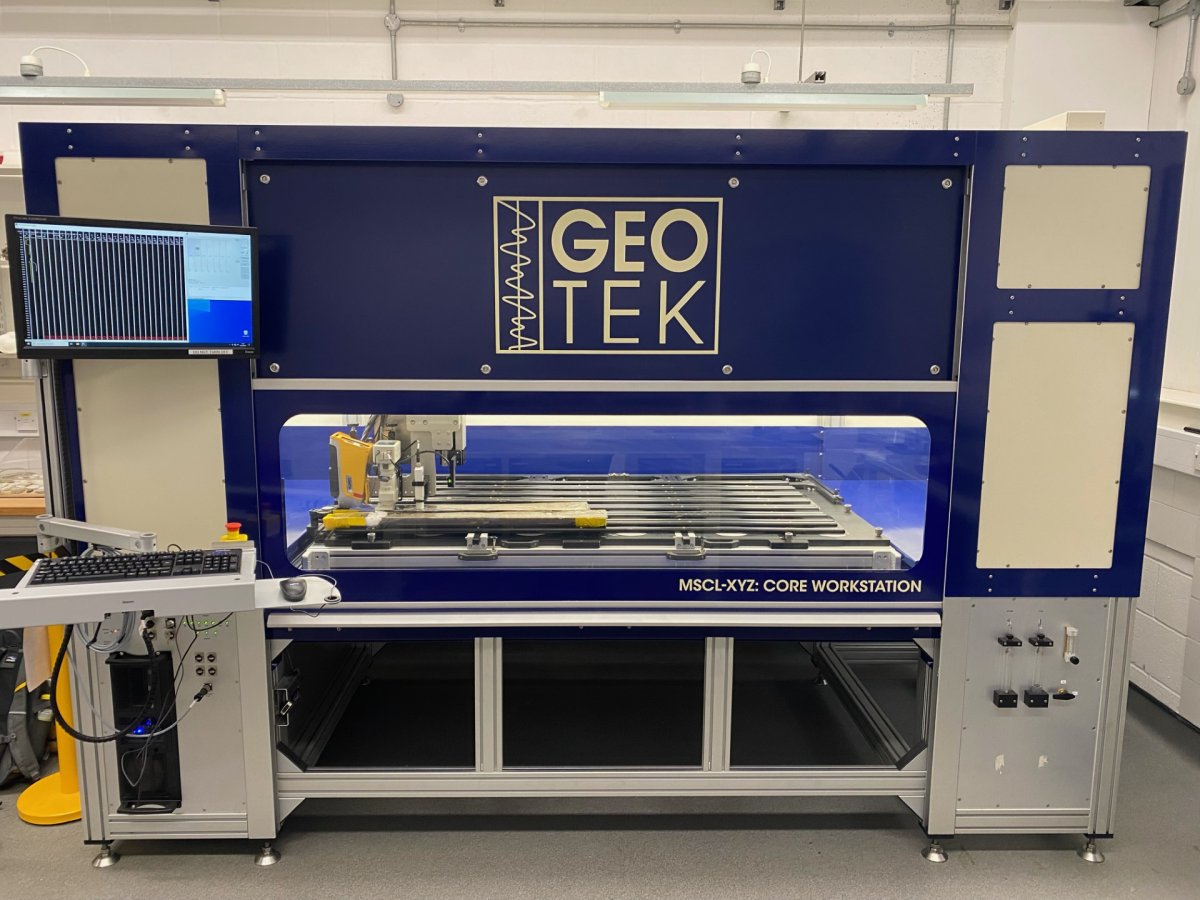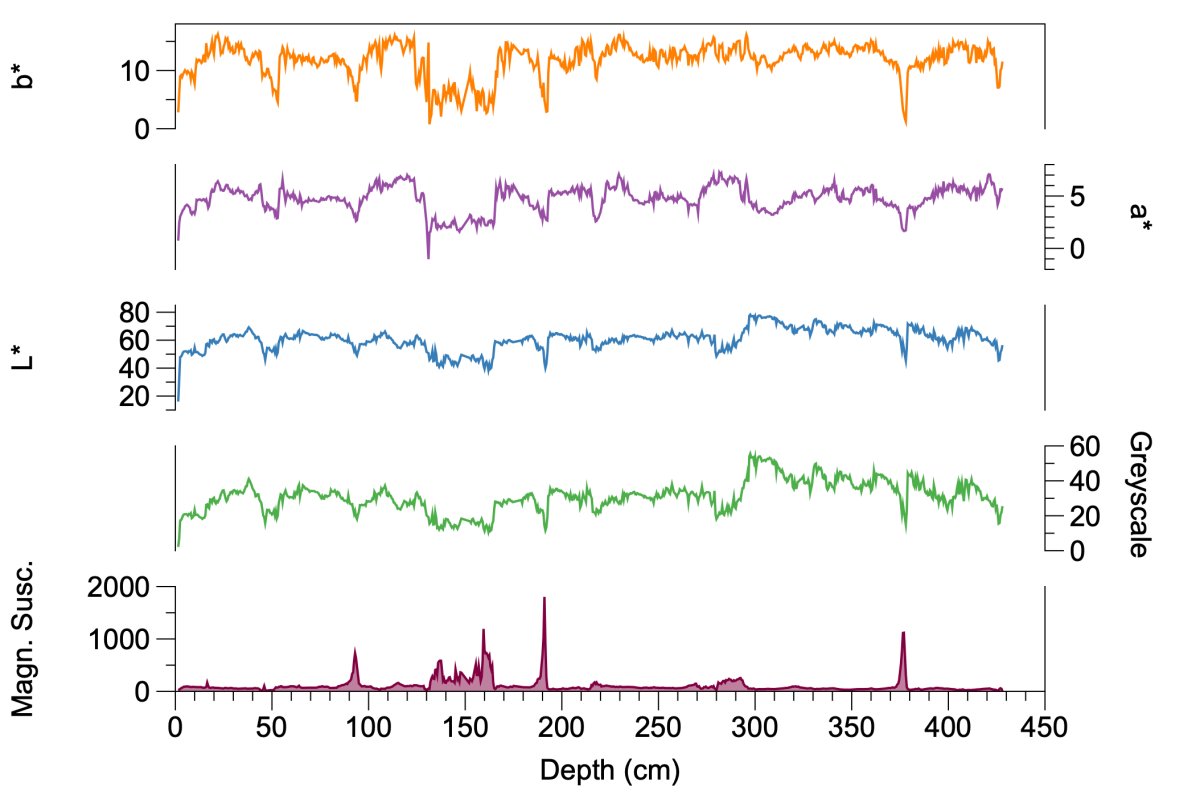The Instrument

The Geotek MSCL-XYZ is standard fitted with a Bartington magnetic susceptibility point sensor and a Konica Minolta spectrophotometer. If quick analysis of natural gamma radiation or element composition is needed, the MSCL-XYZ can be fitted with a natural gamma spectrometer and/or a portable XRF scanner.
Major benefits of analysing samples by the MSCL-XYZ:
- Rapid core logging – multiple split core sections can be analysed at once
- Characterizes physical properties of sediment – magnetic susceptibility data and greyscale reflectance
- High resolution – core sections can be described down to 0.5 cm resolution
- Elemental data – a portable XRF meter can be fitted
- Radioactivity estimates – a natural gamma spectrometer can be fitted
- Integrated stratigraphy – data can be correlated to the MSCL-CIS and the MSCL-S
The rapidity of the MSCL-XYZ has allowed physical properties to become a routine measurement on core samples post-expedition. These properties provide a first-order stratigraphic description on which subsequent studies can be designed.
Samples and Methods
The MSCL-XYZ is primarily designed for analysing large quantities of core samples in a timely manner. Up to seven 1.5 m-long core section can be loaded and analysed automatically.

Samples successfully run on the MSCL-XYZ:
- Marine sediment cores
- Rock samples, provided they are rotary cored and cut
- Sediment cores recovered from lakes
- Cores with peat and soil samples
Sample preparation
Please note, the MSCL-XYZ is set up for split core samples only. Whole-round core samples can better be analysed on the MSCL-S, or need to be split prior to analysis on the MSCL-XYZ
Measurement procedure
After cores are split and a smooth sample surface is obtained, up to seven sections can be loaded and analysed at once. In-house software allows for direct alignment between results obtained on the MSCL-XYZ, the MSCL-CIS, and the MSCL-S.
Data and Applications
The MSCL-XYZ in its standard set-up yields magnetic susceptibility, greyscale reflectance, and CIELAB colour (L*, a*, b*) data. When fitted with the natural gamma spectrometer or portable XRF meter, additional information about radioactivity and elemental make-up can be obtained.

Scientific Applications
The MSCL-XYZ provides for several standard applications in the marine sciences community:
- Description of the physical properties of sediment cores
- Indication of terrigenous materials in core
- Identification of climate cycles and events
- Turbidite detection
- Stratigraphic correlation between sediment cores
- Determination of radioactive minerals (when fitted with natural gamma spectrometer)
- Elemental analysis (when fitted with portable XRF)